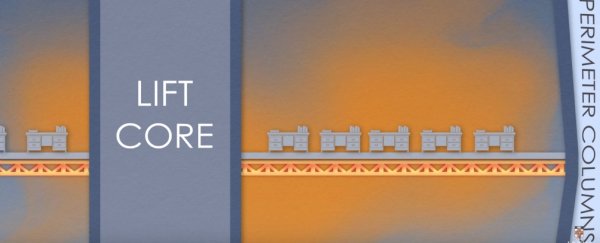After the devastating 9/11 attacks in New York in 2001, the world was left reeling. But it wasn't just the loss of life that was so shocking, engineers were also surprised at how quickly the twin towers had collapsed, despite having heat protection surrounding their internal steel beams. The latest episode of Catastrophic Science, created by the University of New South Wales (UNSW) in Australia, explains how the horrific terrorist attacks have now changed the way we build forever.
It turns out that the World Trade Centre's rapid collapse was a result of its design, which used ultra-stiff, long steel beams to hold up each floor. These beams stretched from the lift core at the centre of the building to its perimeter, with no internal columns in between, to avoid wasting floor space.
This meant that the engineers could build an incredibly stable building capable of housing tens of thousands of workers, but when the airplanes hit, the beams were so rigid that the impact immediately knocked off their fire protection. As a result of the extreme heat following the explosion, the beams then began to expand and push against the perimeter columns, causing the entire structure collapse on itself. "As a result, they don't design buildings that way anymore," UNSW engineer Mark Bradford explains in the video above.
Researchers have now found that using less rigid steel beams supported by plenty of regularly spaced-out columns is preferable, because even if the steel beams warp and buckle in the heat, the columns will hold them in place. This also means that builders don't need to worry about fire protecting beams anymore, which can save about 30 percent of the cost of steel work. Engineers at UNSW have also designed heat-resistant connections to hold the beams in place, so they won't move, and can keep a fire contained in one section of a building.
Bu the World Trade Centre attacks aren't the only tragedy that scientists have learnt from. As the video explains, after the 1995 Oklahoma bombing, engineers worked on developing tougher materials that would give people time to evacuate a building before it collapsed. A team of engineers at UNSW has now created high performance concretes that are twice as strong as regular concrete, and up to 200 times tougher, which means they can absorb up to 200 times more energy and still keep a building standing.
And it's not only buildings that are updating a result of these attacks, researchers are now testing how bomb blasts behave in city environments, as opposed to the open spaces where most of our computer modelling data are collected. But we'll let you find out more about that in the video above, because seeing it is much cooler than talking about it.
While nothing can make terrorist activity less tragic, it's somewhat comforting to know that there's plenty we can learn from them to make future generations safer.
Love science? Find out more about the ground-breaking researching happening at UNSW Science.
